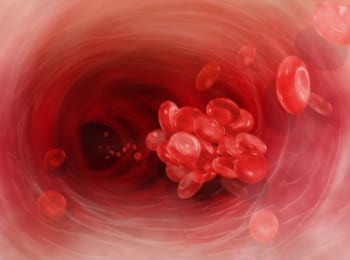
Each time a doctor writes a prescription for warfarin, a blood thinner given to about two million people each year in the United States, it’s a guessing game.
There is no “right” dose of the drug. Everyone is different and it can take weeks of adjustment to find a patient’s ideal amount of the medication.
Too much puts the patient at risk for bleeding. Too little can lead to clots and in turn, heart attack, stroke or even death.
New Labeling
In addition to clinical factors such as age, body size, other medications and ethnicity, genetic factors can affect a patient’s ideal dose of warfarin.
In 2007 the FDA added to warfarin’s label information about the importance of these genetic factors, but stopped short of directing doctors to carry out testing before prescribing the drug.
This may change, however, based on the results of a large international study published yesterday in the New England Journal of Medicine. The study shows that dosing decisions based on genetic information in addition to clinical data come significantly closer to the ideal dose for almost half of all patients.
Pharmacogenetics
Scientists from the International Warfarin Pharmacogenetics Consortium, comprised of research centers in Taiwan, Japan, Korea, Singapore, Sweden, Israel, Brazil, Britain and the United States, used the medical records and genetic information of about 4,000 patients who had been prescribed warfarin to develop a “pharmacogenetic” method for predicting the ideal dose. They then tested their method by applying it to the information from an additional 1,000 patients who had taken warfarin.
Compared to initial warfarin dosing decisions made with clinical data alone or based on a fixed starting dose of 35 mg per week for every patient, the pharmacogenetic method provided significantly better predictions of the final, ideal dose for many people.
“The greatest differences among the dose-prediction approaches were noted among patients whose stable therapeutic warfarin doses were 21 mg or less per week and among those whose stable doses were 49 mg or more per week, representing 46% of the cohort. These are the patients for whom an underdose or an overdose could have adverse clinical consequences,” the authors write.
Help Finding the Right Dose
The dosing method developed by the researchers did not provide a significantly better approximation for the 54% of patients whose ideal dose fell between 21 and 49 mg per week.
While the current study does show that genetic information can better predict the ideal dose of warfarin for a patient, it does not address whether this translates into less risk for bleeding or clotting. This question will be addressed by a soon-to-be-launched NIH-sponsored clinical trial called “Clarification of Optimal Anticoagulation through Genetics” (COAG).
This large study being conducted at 12 sites will evaluate how a gene-based dosing strategy affects a patient’s ability to maintain the correct level of blood thinning, the risk for bleeding problems, quality of life and cost of therapy.
“A better understanding of individual differences in the response, either positive or negative, to medicines should be an overarching goal for pharmacotherapy over the next decade. Pharmacogenetics has the potential to increase benefit and reduce harm in people whose drug responses are not ‘average’,” write Janet Woodcock and Lawrence Lesko, of the Center for Drug Evaluation and Research at the Food and Drug Administration, in an editorial that accompanies the study.
But, they warn, the move toward using genetic information to make prescription decisions must be made prudently.
“Given the expected volume of genetic information and the relative paucity of randomized, controlled trials involving marketed drugs, we need clear thinking about what is required for the adoption of pharmacogenetic testing.”
23andMe scientific advisor Russ Altman is a lead investigator for the International Warfarin Pharmacogenetics Consortium.



